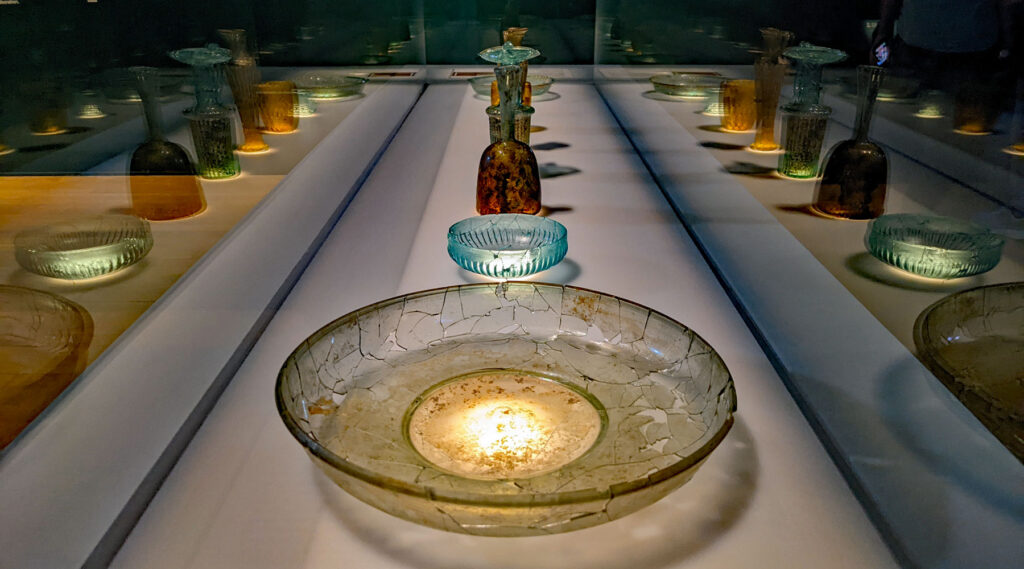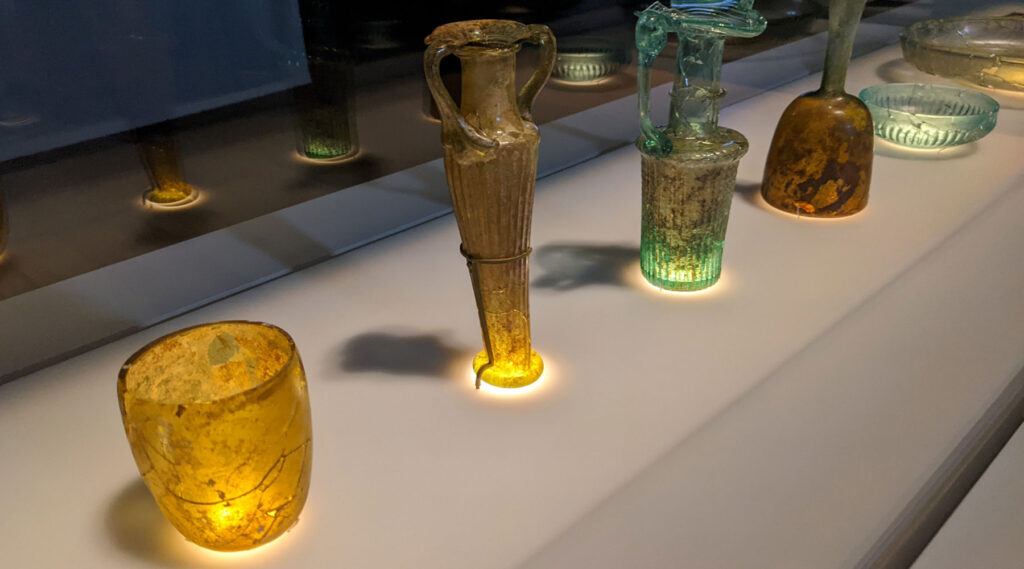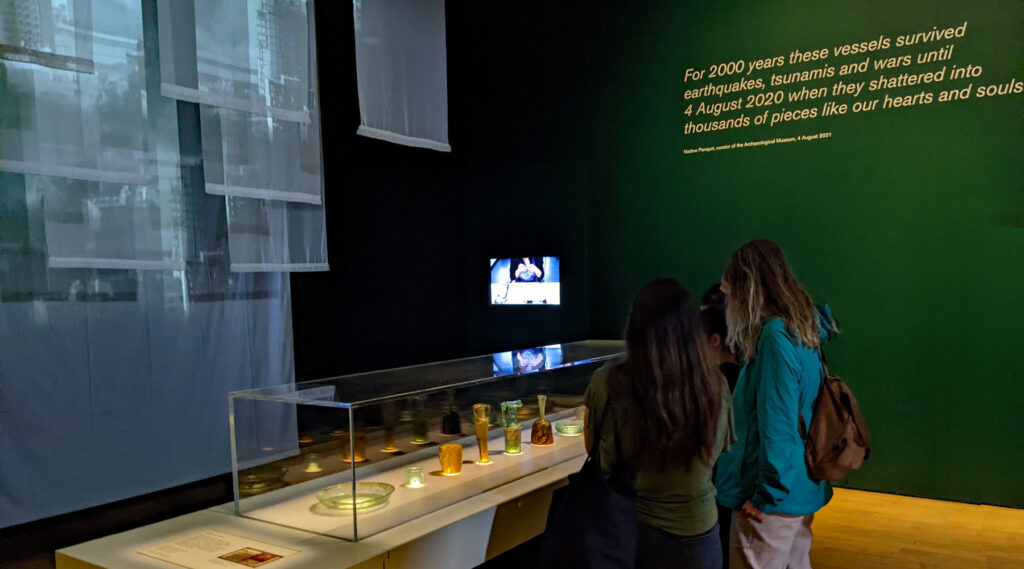Ancient glass vessels, shattered in Beirut’s devastating port explosion have gone on display in London for a few weeks before they are returned to Lebanon.
The glass vessels, which have been restored by the British Museum, come from Beirut’s AUB Museum, which sustained heavy damage to its windows and doors when the port explosion occurred in August 2020. During the explosion, a display case containing 74 vessels fell over from the force of the blast, shattering the glass objects inside: 72 glass vessels from the Roman, Byzantine and Islamic periods. To date, 18 vessels have been conserved as part of an emergency recovery campaign in Beirut in addition to the eight vessels at the British Museum.
Eight of those ancient glass vessels have now gone on display in a darkened room in the museum.
These are not just a random set of ancient glasses though, as they are from the 1st-century BC, at a time when glass blowing was being developed in Lebanon, a period which saw glass production revolutionised. Six of the eight vessels identified for conservation were made by early glass-blowing technology and show experimentation in function and form. Two other vessels date to the late Byzantine – early Islamic periods, and may have been imported to Lebanon from neighbouring glass manufacturing centres in Syria or Egypt.
The choice of a darkened room is so that the glass can be lit up from below showing off the shattered echoes that remain in the glass, highlighting the cracks and gaps left by the restorers. It was an early decision by the conservators and the AUB Museum to put the vessels back together, but leave the cracks and gaps visible. The damage from the explosion is now part of the history of these delicate objects.
These glassy scars are now a permanent reminder of the 2020 explosion and its after-effects across the whole of Beirut society.
The exhibition includes a couple of videos showing how the restoration was carried out and a few signs explaining why the glass is here, and also explaining how the shattered fragments were themselves an opportunity to study the glass interior in a way that would not have been possible before.
Out of devastation, new knowledge has arisen.
In the grand scheme of things, restoring a few old glasses won’t make much of a difference to the shattered city that’s still trying to put its life back together, but it’s a token of hope that things will get better.
The exhibition, Shattered glass of Beirut, is at the British Museum in the room directly to the right of the main entrance, and is free to visit.
The glasses will be on display until 23rd October, after which they are due to be sent back to Beirut.










the first comedy thought that went through my head from the headline was “gawd, is there ANYTHING they wont steal” but of course it’s quite a nice story in the end.